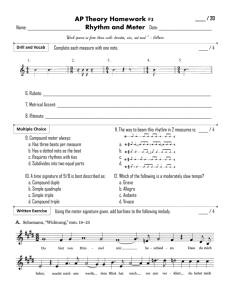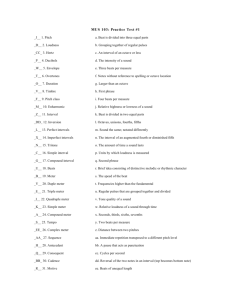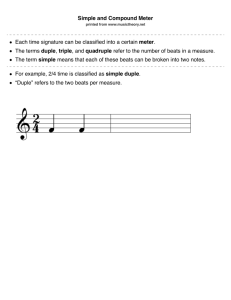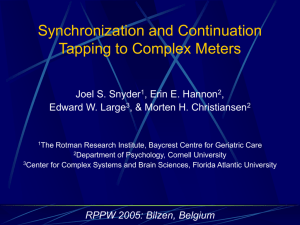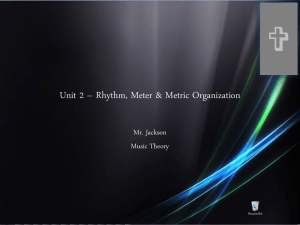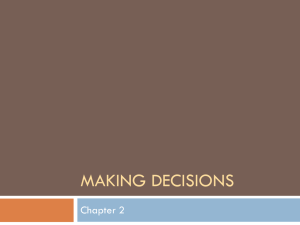CHAPTER 5 Beat, Meter and Rhythm: Compound
advertisement
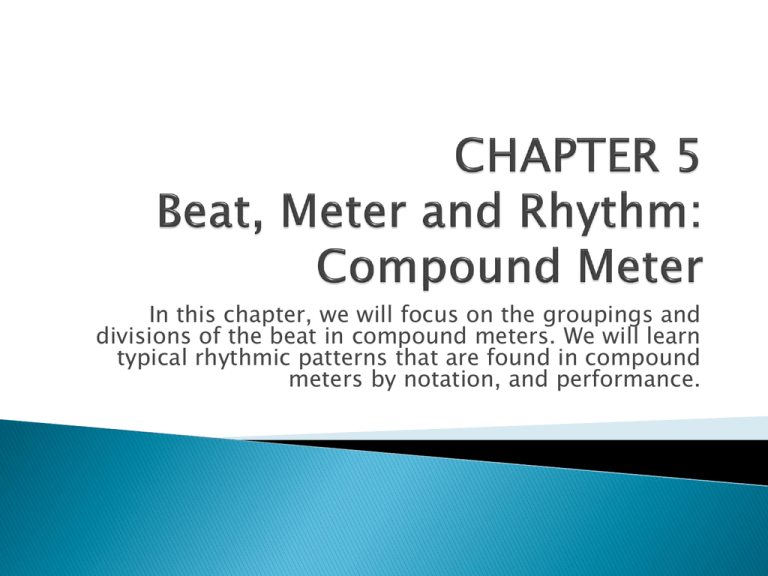
In this chapter, we will focus on the groupings and divisions of the beat in compound meters. We will learn typical rhythmic patterns that are found in compound meters by notation, and performance. Conducting patterns remain the same for compound meters as they are for simple meters Only in a very slow tempo would you conduct with the upper number in the meter signature You would subdivide the pattern. Common Conducting patterns JS Bach Gigue from Violin Partita No. 2 in D minor We will listen to two contrasting songs: Greensleeves and Nachtwanderer. Let’s find the primary beat in each while tapping the beat divisions. What Is the meter? Both songs are in Compound meter. In compound meters: The upper number of the meter signature is 6, 9, or 12 representing duple, triple or quadruple meter. Divide the top number by 3 to get the number of beats per measure (2, 3 or 4) The lower number is usually 4, 8 or 16. This number shows the Division of the beat. Add together 3 of these note values to get the beat unit, which will ALWAYS be a dotted note. Compound Duple Compound Triple Compound Quadruple. The beat unit in compound meters is ALWAYS a dotted note. Down in the Valley Beatles Norwegian Wood Bach Fugue in E Flat Major St. Anne

